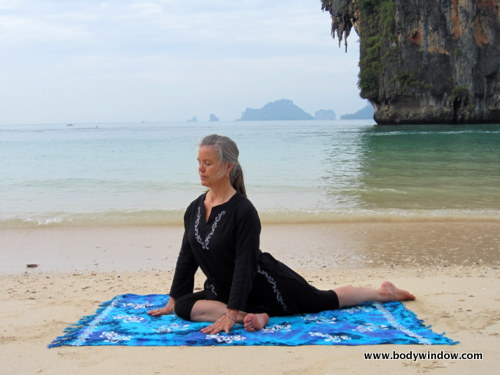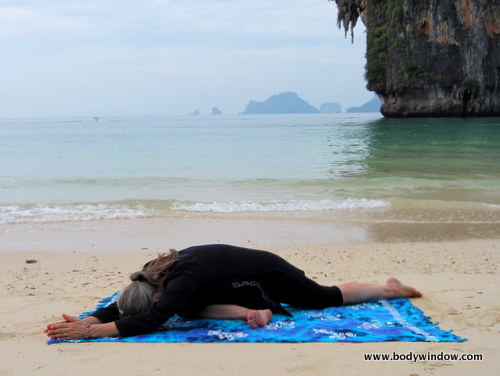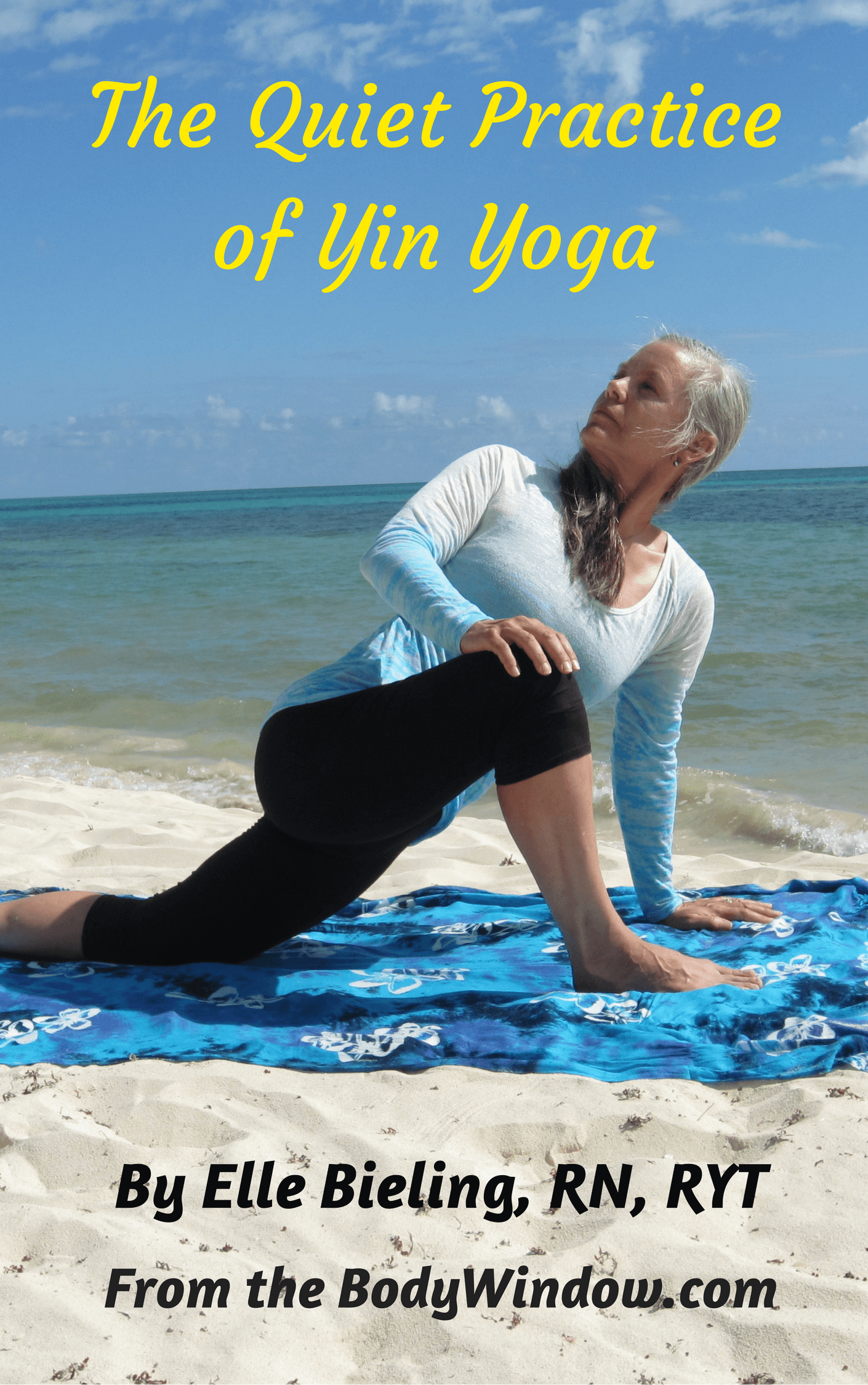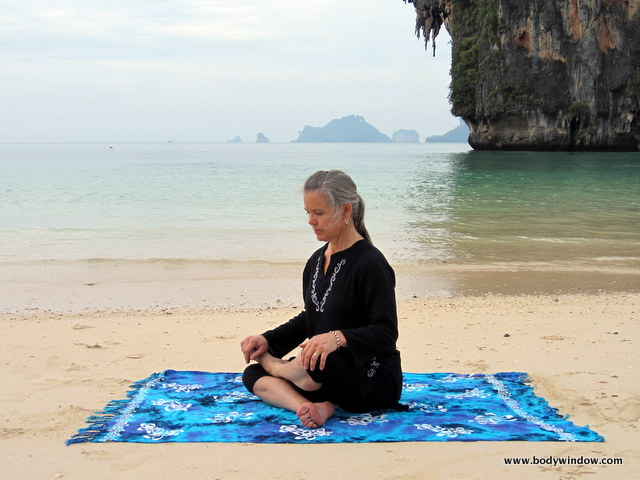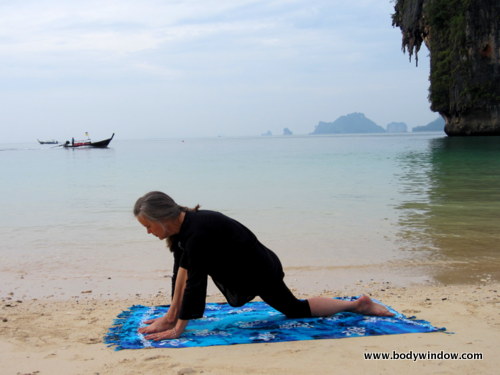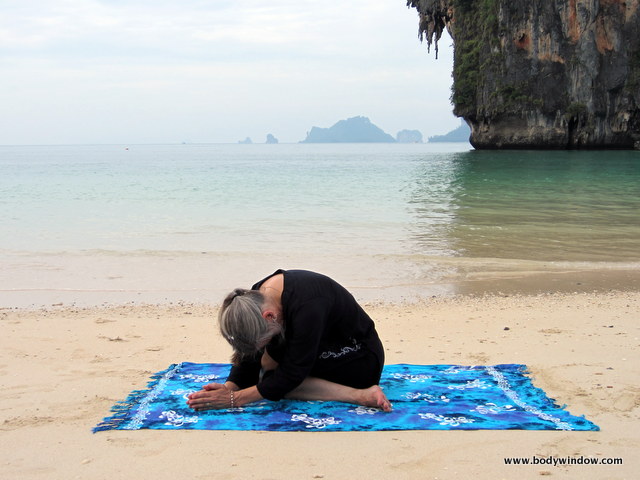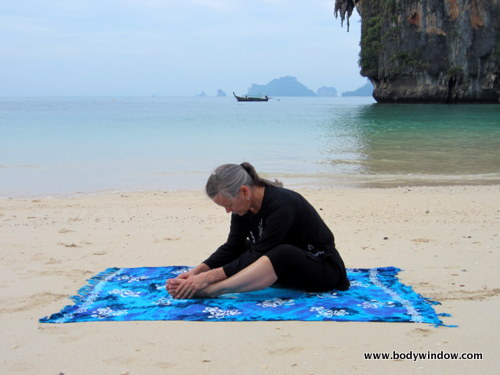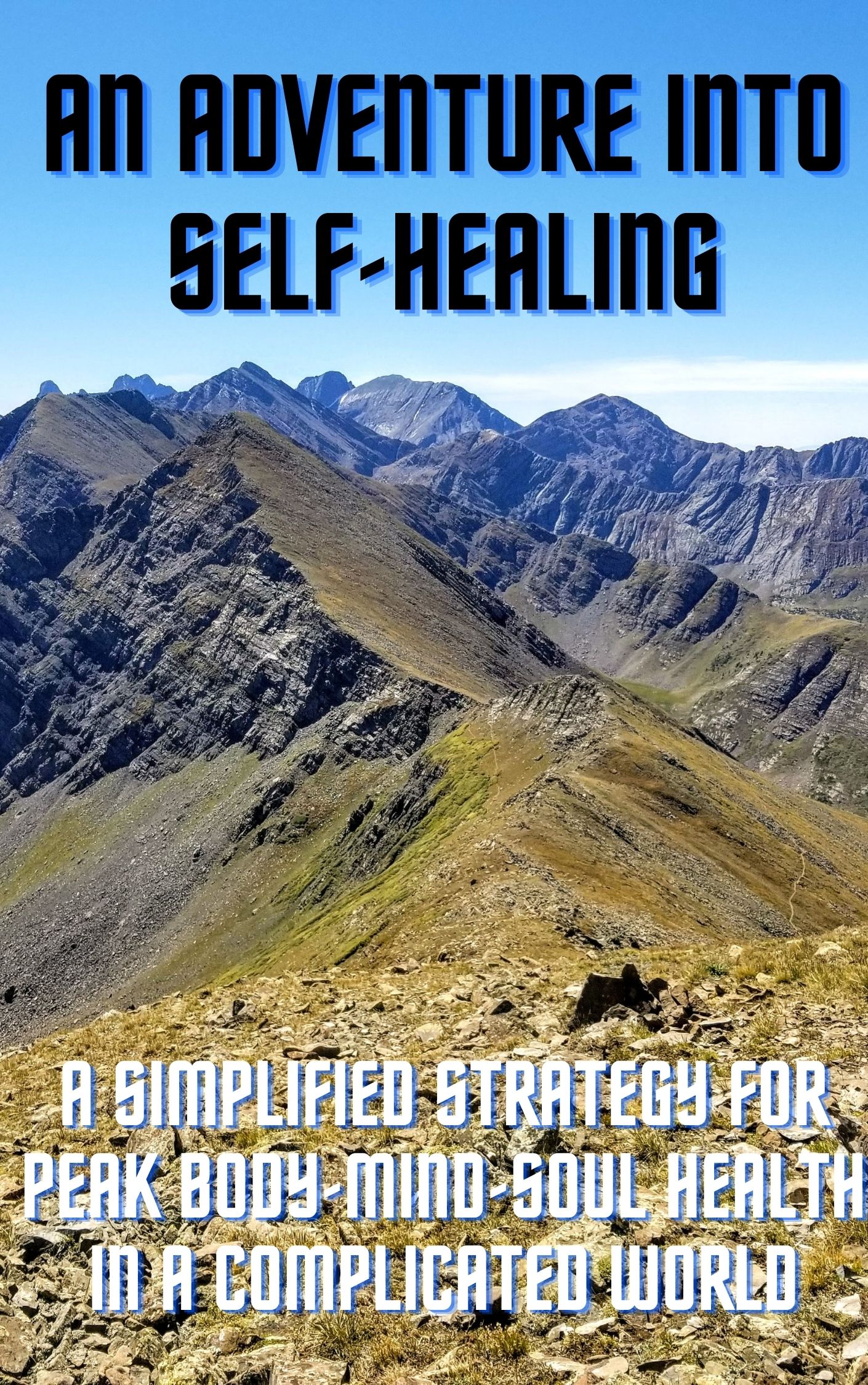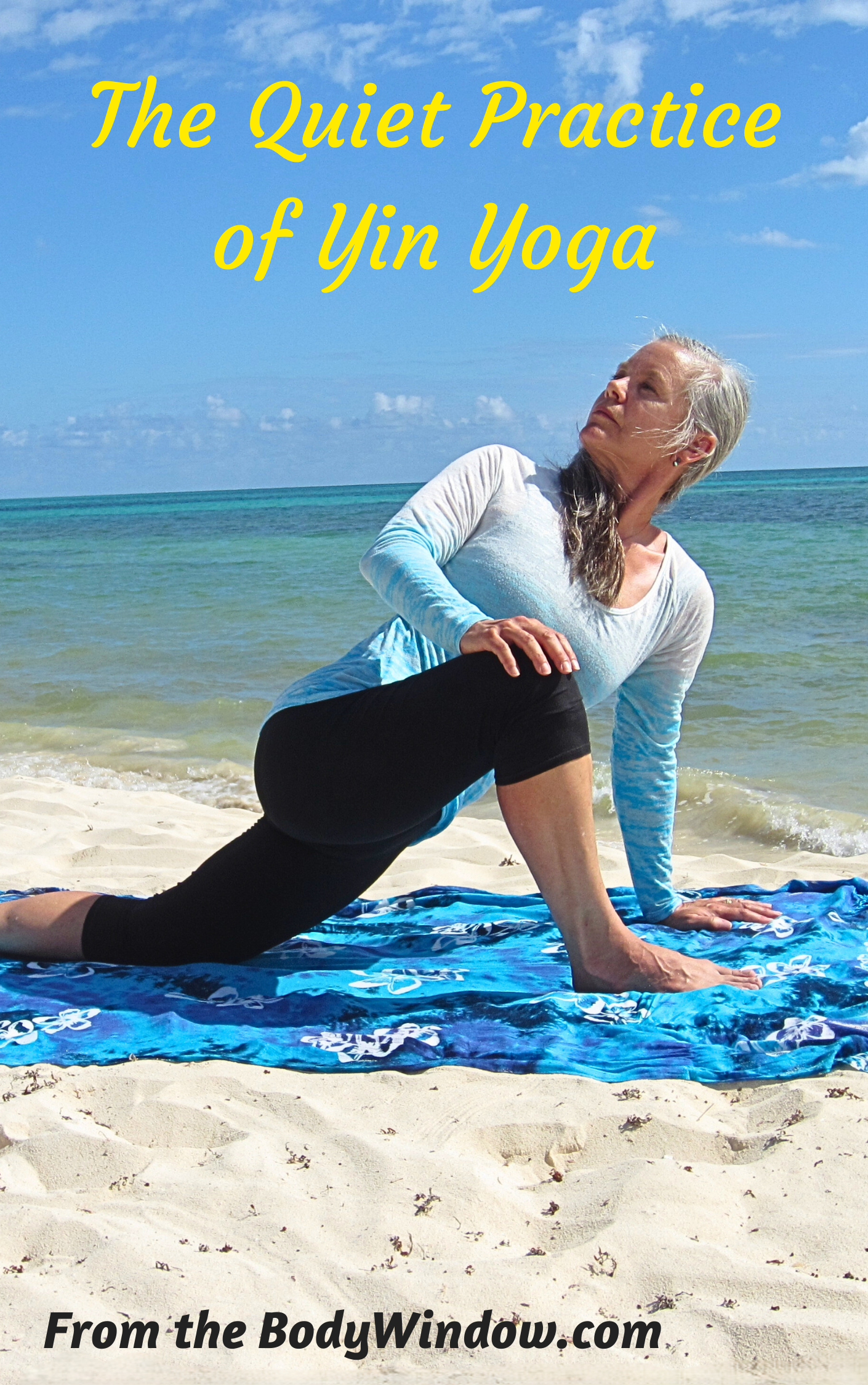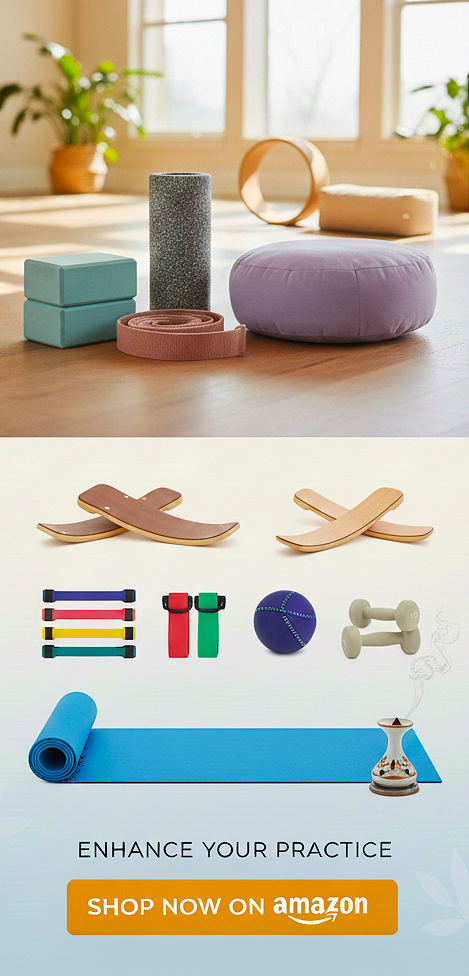Way ~ Through Your Body!
The Pigeon Pose, or The Sleeping Swan in Yin Yoga
The Pigeon Pose is called the Sleeping Swan Pose in Yin Yoga. This pose, when done in the yin fashion, will help you access more mindfulness and great health and well-being! If you think you already know this pose, if you read on, you may change your mind!
"The real yoga is what you can't see." ~ David Williams
In yin yoga, the name of the poses are intentionally different than in the traditional or yang yoga. This is because the intent of the practice is different and must be clarified. The intent of the yang practice of the Pigeon Pose is to work the muscles, whereas the intent of the yin practice of the Sleeping Swan Pose is to release the muscles and work into the deeper tissues. For a review of the differences between a yin and a yang yoga practice, you can click on my article called "What is Yin Yoga?"
I believe that a yin yoga practice will take your personal yoga practice to a much deeper level, as it has mine!
As you practice the Sleeping Swan, remember that your body may look entirely different than mine! I encourage you to not judge how you look, but just honor your body and where it is in the moment you try this pose. I am a fine example, anyway, of staying committed to the benefits of the practice in the absence of a perfect pose!
The Sleeping Swan Pose, like the Pigeon Pose requires the external rotation of your forward leg to open the hip joint. This is not an easy pose, especially if you are a beginner. If you have knee problems, be especially cautious of this pose and DO NOT hold any posture that causes pain and stress on your knee! The same is true for lower back problems. Be very careful and if it hurts a lot (beyond mere mild discomfort) please take the alternative, Eye of the Needle Pose to begin opening your hip.
Begin in the Table Top Pose (or the Child's Pose if you prefer). In this neutral position, take a moment to pause, soften your body and your heart, and connect to your breath. Intentionally deepen and slow your breath.
On an inhale, draw your body forward towards your hands, as you shift your hips and lift your right knee, moving your right knee forward towards your head.
Set your right shin and knee down onto the mat in front of your right hip, with your right knee to the right of your hip, NOT in line with your navel.
If you are able, you may bring your shin parallel to the front of your mat. Otherwise, keep your knee bent with your right foot more towards your pubic bone.
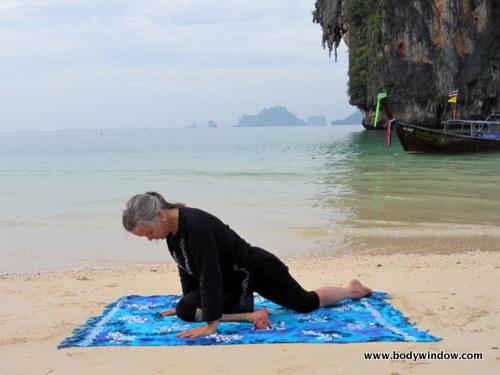 Coming into the Pigeon Pose
Coming into the Pigeon PoseLooking down, check in with your hips and knees to find a position in your right leg that is an appropriate edge for you. An appropriate edge gives you just a gentle, but not too painful tug on your right hip. Use your breath to monitor this. If you can still breathe evenly and deeply, this is an appropriate edge. If you hold your breath, or grimace you need to back off a bit, so you can hold the pose longer.
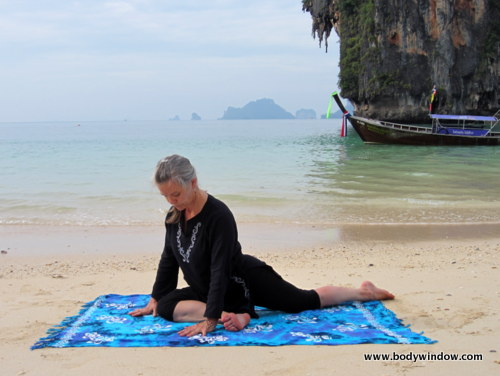 Checking your Pigeon Pose
Checking your Pigeon PoseIt is better to hold the pose less deeply, but longer, than to go deeper and only hold it a short time! This is a more healing practice of presence and awareness to your body. Yin yoga is a combination of meditation and asana (posture), so the longer you can hold the pose, the better.
Keep your left leg straight behind you, and see that your left hip is inline and square with your right and facing down toward the floor. Your left thigh needs to stay on the ground.
If after your final adjustments, your right knee hurts, try placing a blanket or a cushion under your right hip. This is all you may need to relieve your knee pain. If it does not, do not do the Pigeon Pose. Instead, you may try the Broken Pigeon Pose, or the Deer Pose, as it is known in yin yoga. Or, you may lie on your back and take the Eye of the Needle Pose to open your hips.
Now, lift and open your chest. Hold it high for a few breaths, to feel the yang nature of the traditional Pigeon Pose using your musculature.
Keep the feeling of lightness in your knees and heaviness in your hips for the proper action of this Pigeon Pose. If you do this, you will not put too much pressure on your knee!
From the upright pose, on your exhale, slowly lower your upper body to your elbows. IF your lower back begins to hurt, lift your torso back up to the upright position. You may try to stay in the upright position for a while to see if your lower back releases as you breath energy into it. If it releases and feels safe, try lowering your upper body again. If it does not, conclude the pose after about a minute, with the intent to try again the next day!
If your knees and lower back feel safe, lower your upper body all the way to the ground. Do not hurry and do not feel like the goal is to get your chest to the ground. Remember, yin yoga is the practice of being present, without judgement, to your body where ever it is in the moment!
Do not go as far as you can immediately, but test your body and
its reaction to the pose first. If you go immediately to your full edge,
you may not have the endurance to hold the pose for 3-5 minutes. When
you are hurting, this is a loooong time! Go slowly at first and gently
lower yourself as you feel your body relax and release all your muscles!
You can go deeper in a less aggressive fashion if you do it this way!
This is truly a body mindfulness practice!
If you don't feel you can go all the way to the ground, this is OK! You may boost your upper body by lying on a rolled up blanket or bolster. Or you may stack your fists, one on top of the other in front of you and lay your forehead on the tip fist.
If you have even more space in your
hip, and your whole upper body resting down on the ground, you may raise
your arms up and over your head. You may put your hands in the prayer
position, if desired, as shown.
Whatever upper body position you chose, relax your head and neck so that your head feels heavy and supported. Imagine your hips heavy as well to protect your knee!
If you are in the Broken Pigeon or Deer Pose, lower your upper body over your right knee, moving and resting your chest on your right thigh, blanket or bolster.
Keep breathing deeply while holding this pose. The Sleeping Swan tugs on the outer hips, which tugs on your Gallbladder meridian! It also places additional pressure on the inner leg and groin to nourish the Liver meridian.
By stimulating your Gallbladder and Liver meridians, through the self-acupressure of this pose, you are better able to notice your inner energy regarding feelings of anger. It is important to have a healthy gallbladder and liver energy to support your muscles and tendons, so noticing any emotions arising in this pose is important to your overall health and well-being. The opening of energy movement or "chi" through your gallbladder and liver meridians will also help with your ability to feel compassion to yourself and others.
Balancing your liver and gallbladder chi will help you prevent conditions of the muscles and tendons, such as arthritis, cramping, muscle weakness and stiffness, excessive fatigue and weakness. The Liver and Gallbladder meridians also affect the eyes, so staying balanced here will improve poor vision. And finally, Liver and Gallbladder chi balance helps you improve your mental state and helps to prevent vertigo and dizziness.
All this health to you, just for doing the Sleeping Swan Pose!
While you are holding this pose, you may do some inner breath work, like belly breathing. It
is especially effective to breath in deeply into your belly, the core of
your being, to gather energy there. Then, on the exhale, send that
energy, or prana to the area that is needing attention. Continue to do
this throughout the length of the pose.
Before you come out of the Pigeon Pose, send a few of your deepest final breaths to your hip and back and whatever area needs releasing. Then, slowly, on the inhale, walk your hand back up toward your chest and raise your upper body back up to the upright position.
Lift your body up and take your right knee back and lie on your stomach. Place one hand on top of the other under your head, turning it to the side, and rest here in this neutral position for a few breaths. OR, if you prefer, you can push up to the Downward Dog Pose to unwind your hips from the Pigeon Pose. You may feel a hundred years old after staying in this pose for several minutes, but I assure you, your hips will ultimately feel great!
Finally, don't forget to do the other side for equal amounts! You may notice that one side is more open than the other. This is almost always true of everyone.
May your yin yoga practice be enhanced by the Sleeping Swan Pose! May you use this asana in a mindful and meditative fashion for experiencing your body as part of yourself and your soul. May you always be open to your heart and your body's messages. Your body is your window to your soul!
Want a handy reference, over 125 pages of all 36 of my Yin Yoga poses in a complete eBook? If you wish to stay healthy, or have a targeted area for healing, there is nothing like "The Quiet Practice of Yin Yoga" to heal your body, mind and soul! Click here to learn more!
OR, if you are ready to purchase click below:
Only 5.95 USD
Don't worry - I use PayPal, but it allows payment with a credit card. It also converts your currency automatically - see the price in your currency by clicking here.
More Hip Opening Yin Poses for You:
Can't find what you're looking for? Search this website:
Support This Website and Its Mission
Thank you so much for considering a donation to help support this website. I appreciate your thank-you for access to so much free information. If you feel you have been blessed by this website, thank-you for your donation! (Please note that you will be directed to PilgrimageTraveler.com's Paypal page when you click the donate button. This is another website of mine, a subsidiary and I have consolidated two accounts!)
© Copyright 2009-, by Elle Bieling, BodyWindow.com
All Rights Reserved
We also hereby confirm, as stated in our Privacy Policy, that we do not sell personal information of any kind.
Information on this website is not intended for medical advice. See your health care provider for any health concerns. By using this website and/or practicing any yoga postures, foam rolling exercises or other physical movements contained herein, you are agreeing that you are in good health, cleared by your healthcare professional to participate in physical activities and you release The Body Window from any liability involved in the practice.

